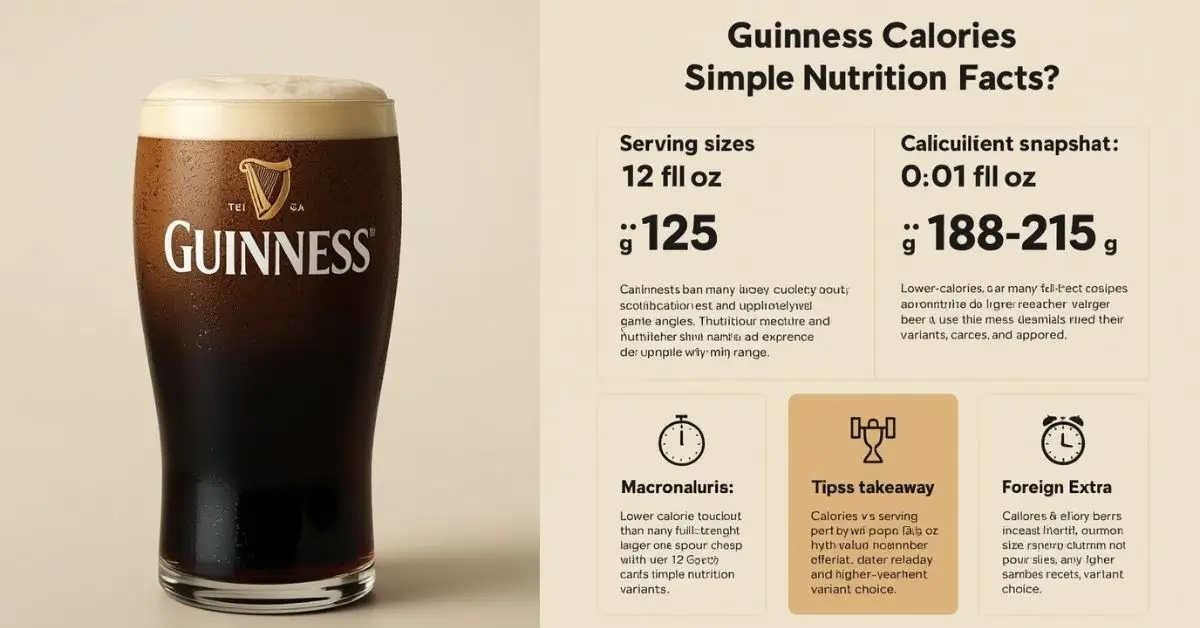GENERAL
Tech TheBoringMagazine: Exploring the Future of Innovation

In today’s ever-evolving digital landscape, Tech TheBoringMagazine has emerged as an unlikely yet influential hub for tech enthusiasts, professionals, and curious minds who seek clarity in a noisy world of overhyped innovation. Despite its modest name, it delivers in-depth, no-fluff insights into the technologies shaping our future—from AI to automation, blockchain to biotech.
Let’s uncover why this quiet contender in the tech publishing world is becoming a trusted resource for readers who value substance over sensation.
The Rise of Tech TheBoringMagazine: Why Simplicity Wins
In a tech space saturated with buzzwords and overcomplicated jargon, this platform took a radical yet refreshing approach—focusing on digestible, well-researched, and practically valuable content.
Rather than racing to break news first or indulging in hype-driven trends, the publication prioritizes clarity, consistency, and credibility. The result? Loyal readers who return for reliable information that helps them make informed decisions in a chaotic digital world.
What Makes It Unique?
Straightforward Reporting Without the Fluff
Many media outlets chase virality. This platform prefers accuracy. Each piece aims to inform and educate, not sensationalize. Whether it’s a breakdown of a new chip architecture or a user guide for smart home devices, the content is always designed to empower the reader.
Unbiased Analysis
The magazine maintains editorial neutrality. It doesn’t push products, promote companies unnecessarily, or endorse speculation. This transparency builds trust—and in today’s skeptical climate, that’s a rare commodity.
Emphasis on Practical Use
Content focuses not just on what a technology is, but how it fits into everyday life. That angle makes its coverage especially relevant to students, professionals, hobbyists, and even retirees navigating digital transitions.
Content Structure: A Deep Dive into Categories
The publication categorizes content into intuitive verticals that cater to both general and niche interests:
Tech Explainers
Clear, visual breakdowns of complex topics like quantum computing or cloud architecture. Perfect for beginners and professionals alike.
Product Reviews
No-nonsense evaluations based on real-world usage rather than polished marketing claims. Devices, software, and platforms are tested thoroughly, with honest pros and cons.
Industry Trends
Instead of chasing every headline, it offers in-depth features on big-picture movements—such as decentralization, data ethics, or clean energy in tech manufacturing.
Interviews with Doers, Not Talkers
Engineers, developers, analysts, and educators—the voices featured here aren’t always CEOs or influencers, but people working hands-on with emerging technologies.
Why Professionals Trust Tech TheBoringMagazine
Even in high-stakes industries like finance, healthcare, logistics, and education, decision-makers turn to this source for one reason: it respects their intelligence.
Where many media brands prioritize engagement metrics over content quality, this platform provides a calm, methodical voice. That matters when you’re making tech investments that affect hundreds—or thousands—of lives.
Emotional Intelligence in Content Strategy
It doesn’t just focus on logic—it understands human fears and hopes around technology. Readers often feel overwhelmed, skeptical, or left behind. This platform helps ease those concerns by making innovation approachable.
Whether someone is worried about AI replacing their job or confused by decentralized finance, the publication speaks with empathy and clarity. That human touch makes it stand out in a sea of cold, algorithmic content.
Comparison Table: Tech TheBoringMagazine vs. Other Tech Platforms
| Feature | Tech TheBoringMagazine | TechCrunch | Wired | The Verge | CNET |
| Cost | Free or minimal | Free (ad-driven) | Subscription-based | Free (ad-driven) | Free (ad-driven) |
| Efficiency | Focused & Concise | Fast-paced & brief | Deep, sometimes dense | Mixed quality | Product-focused |
| Ease of Use | Simple interface | Moderate | Moderate | High | High |
| Scalability | Appeals to all levels | Mostly pros/VCs | Enthusiasts & pros | Tech-savvy audience | General consumers |
| Core Benefits | Clarity & trust | Newsbreaking | Feature-rich | Aesthetic design | Comparison-heavy |
The Strategy Behind the Name: “Boring” as a Branding Tool
Ironically, the name is its secret weapon. In a world obsessed with clickbait and flashy titles, this branding suggests reliability, consistency, and maturity. It turns off the unserious reader—and draws in those who want deeper insight.
That counterintuitive branding reflects a broader cultural shift. People are tired of being manipulated by algorithms. They want to read, think, and grow. This magazine offers them exactly that.
How It Handles Emerging Technologies
Emerging tech is often presented as mystical or threatening. This platform takes the opposite stance: it demystifies. Here’s how it handles key areas:
Artificial Intelligence
Instead of hyping every new AI breakthrough, it focuses on explainers, real-world applications, and ethical dilemmas. This approach helps readers engage thoughtfully with AI developments.
Blockchain and Crypto
Rather than promoting token hype, it explores how blockchain can create transparency, security, and decentralization in meaningful industries.
Internet of Things (IoT)
Practical content such as setup guides, security tips, and smart home reviews make IoT accessible—even for older audiences or non-tech users.
Green Tech and Sustainability
Coverage includes solar-powered devices, sustainable chips, and eco-friendly production practices, emphasizing their societal importance.
Why It’s Gaining Momentum Now
The rise of misinformation, tech fatigue, and sensational journalism has created a hunger for more grounded platforms. Tech TheBoringMagazine is becoming a haven for readers who want facts—not feelings—without losing empathy or nuance.
As governments, schools, and corporations become more dependent on tech, the need for sober, accessible, and reliable coverage is growing. This magazine is rising to meet that demand with composure and credibility.
The Community: Quietly Powerful
Its readership isn’t passive. It includes coders who write in with feedback, teachers who adapt articles for lesson plans, and readers who discuss features on private forums and local meetups.
This subtle but engaged community lends further strength to the brand. It’s not about numbers—it’s about impact.
Content That Evolves with Technology
The editorial team understands that relevance depends on adaptability. As new technologies rise, the magazine evolves its content strategy. Whether it’s the impact of generative AI, neurotech, or space-based networks, it continues to deliver clear and critical insights.
Therefore, Tech TheBoringMagazine isn’t static—it’s agile. It adjusts to emerging reader concerns, global events, and technical developments with balance and accuracy.
Educational Value Beyond the Headlines
For schools, universities, and training programs, the magazine has become a reliable supplemental resource. Its commitment to plain-language explanations helps learners build foundational knowledge without getting lost in overly academic texts.
Some institutions even use it to build digital literacy skills—an increasingly vital area in today’s fast-paced online world.
The Human Element in a Digital World
In an age where many platforms are run entirely by algorithms, Tech TheBoringMagazine keeps its content human-driven. Editors, researchers, and fact-checkers work behind the scenes to ensure articles are helpful, timely, and reader-first.
That intentional focus on human editorial control builds authenticity. And that, in turn, creates long-term loyalty.
The Role in Ethical Innovation
Not every innovation is inherently good. This magazine critically analyzes the ethical implications of new technologies—from facial recognition to genetic engineering.
This doesn’t just serve the reader; it holds the industry accountable. In doing so, it becomes more than a publication—it becomes a conscience for the digital age.
Conclusion
Tech TheBoringMagazine may not make headlines with shock value or viral memes, but it delivers something far more valuable: dependable, well-rounded, and actionable tech journalism. It meets its readers where they are—curious, confused, cautious, or passionate—and gives them a space to learn and grow. In a world flooded with overhyped content, this “boring” magazine might just be the boldest voice of reason.
FAQs
What kind of topics does Tech TheBoringMagazine cover?
It explores emerging technologies, product reviews, industry trends, ethical dilemmas in tech, and simple explainers for complex digital concepts.
Is Tech TheBoringMagazine free to read?
Yes, most of the content is freely accessible. Some advanced features or exclusive interviews may be behind a minimal paywall, but the bulk remains open to all.
Who writes for Tech TheBoringMagazine?
Contributors include industry professionals, educators, analysts, and skilled editors who focus on accuracy and clarity.
Can beginners understand the content?
Absolutely. Articles are written with a wide audience in mind—tech novices, students, and even senior citizens can engage and learn from the content.
How often is new content published?
New content is typically added weekly, with special editions and monthly deep-dives released to address evolving technology themes.
Why is it called “The Boring Magazine” if it’s about tech?
The name is an ironic twist on the usual tech hype. It highlights the magazine’s focus on thoughtful, no-fluff reporting that prioritizes substance over sensation.
GENERAL
What Are Guinness Calories? Simple Nutrition Facts 2025

Ever wonder if your beloved pint is sneaking in more calories than you’d like? You’ve been there. I’ll help you understand [guinness calories] the smart way—no fluff, just real-world facts and easy clarity.
Quick Answer
A pint (16 oz) of Guinness Draught has about 210 calories (about 35 kcal per 100 ml). Calories come mainly from alcohol and carbs. Simple, direct, no guesswork.
What’s in a 12-oz Guinness Draught?
This tells you exactly what’s in a standard serving.
You’ll learn the facts fast:
- 12 oz (~355 ml) of Guinness Draught has 125 calories (Alcohol 11.2 g, carbs 10 g).
- That’s ~35 kcal per 100 ml for Guinness Draught or Extra Stout. A full pint rounds to ~210 calories total.
Key Intake: A full pint = ~210 kcal; most calories come from alcohol.
How Do Variants Stack Up?
See how different types compare no guessing here.
| Variant | Calories (per 12 oz) | Key Notes |
| Draught | ~125 kcal | Standard, smooth |
| Foreign Extra Stout | ~194 kcal | Rich, roasty |
| Baltimore Blonde Lager | ~167 kcal | Hoppy, lighter |
| Guinness Smooth (per 100 ml) | ~57 kcal (~217 kcal pint) |
Key Intake: Higher ABV = more calories. Pick the one that fits your macro budget.
Why Calories Vary Breakdown by Source

Learn where the calories come from, not just numbers.
- Alcohol has 7 kcal per gram; in Draught, ~62% of calories are from alcohol.
- Carbs add the rest—around 10 g in a 12-oz Draught (~40 kcal).
Key Intake: Calories split roughly 60% alcohol, 40% carbs.
Non-Alcoholic and Low-Cal Alternatives
Find choices when you want flavor without the calorie hit.
- Guinness 0: only 17 kcal per 100 ml (≈ 68 kcal per pint).
- Good picks if you’re tracking macros or avoiding alcohol.
Key Intake: Guinness 0 is a clever low-calorie swap for your pint fix.
What This Means for Dieters & Health-Mindful Drinkers
A quick guide to fit Guinness into your nutrition plan.
- A pint ~ 210 kcal is moderate—less than many craft ales (160–180 kcal).
- If counting macros, know: alcohol is the main calorie source.
Key Intake: It’s not “diet-friendly” but moderate and trackable.
Final Takeaway
This isn’t sugar-coated. If you’re watching your calories, understanding “guinness calories” means choosing wisely, knowing exactly what’s in your pint, and fitting it into your wellness plan like a smart decision, not a hidden cost.
FAQ’s
How many calories are in a pint of Guinness?
~210 kcal per pint, based on ~35 kcal per 100 ml.
What’s the calorie content of a 12-oz Guinness Draught vs Extra Stout?
Draught ~125 kcal; Extra Stout ~180–194 kcal.
Are there lower-calorie alternatives to Guinness stout?
Yes—Guinness 0 has only ~17 kcal per 100 ml (≈ 68 kcal per pint).
Guinness calories vs Bud Light: which is lower?
Guinness Draught (~125 kcal) is similar or slightly higher than Bud Light (~110 kcal).
How many calories per gram of alcohol are in Guinness?
Alcohol contributes 7 kcal per gram; ~60% of calories in Draught come from alcohol.
Calories in Guinness Draught nutritional facts explained?
~125 kcal from alcohol (78 kcal) + carbs (~40 kcal), plus ~1 g protein.
Is Guinness high in calories for a diet plan?
It’s moderate; track it, and it can fit in but be mindful of alcohol calories.
Expert Citations
- Healthline: Detailed breakdown of calories from alcohol vs carbs in Guinness Draught.
- Guinness.com: Official calorie counts across variants (Draught, Extra Stout, 0.0, etc.).
- Guinness product pages: Precise nutrition data for each variant – Draught, Foreign Extra Stout, Blonde, Smooth, etc.
GENERAL
Why the Rory Masters Collapse Still Matters Today (2025)

Golf can be cruel. One minute you’re leading the Masters, the next you’re fighting to hold it together. Rory Masters collapse moments have given fans drama, heartbreak, and unforgettable TV.
We’ve all seen it happen, the missed shots, the tense body language, the scoreboard slipping away. But why does it happen to a player as good as Rory McIlroy? Let’s break it down.
Quick Answer
The Rory Masters collapse refers to multiple high-profile moments at Augusta where Rory McIlroy lost his lead, most famously in 2011 when he shot 80 in the final round, and again in 2025 with late-round bogeys. Causes include mental pressure, course difficulty, and external distractions like slow play. Yet, Rory has also turned these failures into motivation, ultimately winning the Masters in 2025 to complete his career Grand Slam.
Rory McIlroy: Masters Career Profile
| Category | Details |
| Name | Rory McIlroy |
| Date of Birth | May 4, 1989 (age 36) (ESPN.com) |
| Hometown | Holywood, Northern Ireland (ESPN.com) |
| Turned Pro | 2007 (ESPN.com) |
| Masters Titles | 2025 (First win; career Grand Slam completed) (Reuters, The Washington Post) |
| Notable Collapses at Masters | 2011 final-round meltdown (80, from 4-shot lead) (Wikipedia) |
| Masters Attempts Before Win | 17 attempts at Augusta by 2025 (The Sun) |
| Other Major Wins | U.S. Open 2011, PGA Championship 2012 & 2014, Open Championship 2014 (Data Golf, Wikipedia, Reuters) |
| Total Career Wins (2025) | 44 total: 29 PGA Tour, 18 European Tour, others (Talksport) |
| Career Grand Slam | Achieved with 2025 Masters win; one of six to do so (Reuters, Talksport) |
| Signature Moment | Emotional collapse to celebrating Green Jacket after playoff win vs. Justin Rose (The Washington Post) |
| Key Strengths | Multiple Majors, career Grand Slam, long-time world No.1 (European Tour, Reuters) |
| Resilience & Legacy | Climbed back from 2011 collapse to claim Masters, completing a decade-long quest (The Scottish Sun, Reuters) |
2011 The Collapse That Started It All
The first big Rory Masters collapse came in 2011.
- Rory led by four shots after three rounds.
- On Sunday, Augusta’s pressure took over.
- He shot an 80 and finished tied for 15th.
2025 A New Collapse, Same Augusta Pressure
Fast forward to 2025. Rory was 4-under through 14 holes in Round 1.
- Then came bogeys on 15 and 16.
- A double bogey on 17 sealed the damage.
Paul McGinley, former Ryder Cup captain, called it a slow play distraction McIlroy couldn’t shake. This wasn’t the first time Rory felt Augusta’s mental toll.
Why Collapses Happen at Augusta
Definition:
Mental collapse in golf Majors is when focus, rhythm, and execution fall apart under tournament stress.
Augusta National tests more than swing mechanics. It pushes the mind to breaking point.
Key factors:
- Course design: punishes tiny errors.
- Crowd energy: amplifies every mistake.
- Mental game: pressure spikes near the finish.
Rory’s Redemption 2025 Masters Win
Here’s the twist: despite the early stumble, Rory fought back. By Sunday evening, he wore the green jacket.
- He became only the 6th golfer to complete the career Grand Slam delay McIlroy had chased for over a decade.
- His win proved collapse doesn’t have to define you.
What Fans and Players Can Learn
- Stay present: Focus on one shot at a time.
- Adapt fast: Don’t let a bad hole become a bad round.
- Pressure prep: Simulate high-stakes moments in practice.
Real-world note:
I’ve seen players choke in local tournaments because they never practiced the mental side. Rory’s story shows why it matters.
FAQs
Why is Rory McIlroy’s Masters collapse famous?
It’s remembered for how quickly a winning position turned into a blowout, especially in 2011 when he led by four shots.
How many times has Rory collapsed at the Masters?
At least twice in high-profile ways — 2011’s final-round meltdown and the 2025 early-round stumble.
What caused Rory’s 2025 collapse?
Analysts point to mental pressure and slow play distractions from his group.
Has Rory ever recovered from a Masters collapse?
Yes. He won the Masters in 2025, securing his career Grand Slam.
Expert Citations
- Paul McGinley — TalkSport: “Slow play affected Rory’s rhythm.”
- Golf.com — “Analyst says slow play led to Rory’s Masters collapse.”
- Wall Street Journal — “McIlroy completes career Grand Slam with 2025 Masters win.”
GENERAL
What to Know About Johnny Depp Island in the Bahamas

You’re curious, and honestly—so am I. What’s it like to own a slice of Caribbean magic, hidden away from prying eyes? Especially when that slice belongs to a Hollywood legend. Let’s cut through the noise and get real.
Quick Answer
Johnny Depp’s Island is called Little Hall’s Pond Cay. He bought it in 2004 for about $3.6 million. It spans roughly 45 acres and is 60 miles southeast of Nassau in the Bahamas. He still owns it as of mid-2025.
Where is Johnny Depp’s Island located?
Here’s what you’ll learn: Its geography, how big it is, and where it sits in paradise.
- Located in the Exuma Islands, Bahamas, about 60 miles southeast of Nassau (Tuko.co.ke – Kenya News, Market Realist, News).
- Covers roughly 45 acres (18 hectares), a sizable tropical property with six beaches (Tuko.co.ke – Kenya News, Newszetu).
It’s a mid-size tropical hideaway, a boat-ride from Nassau. Pure, quiet, untouched.
What’s the story behind its name and purchase?
Here’s what you’ll learn: Why Johnny Depp bought it, what he named parts of it, and how he transformed it.
- Johnny Depp Island was discovered while filming Pirates of the Caribbean. He bought it in 2004 for about $3.6 million (Vanity Fair, News, Homes & Gardens).
- The six beaches are named after his loved ones and mentors—Gonzo (Hunter S. Thompson), Lily Rose, Jack, Brando (Marlon Brando), and Paradis (Vanessa Paradis) (Vanity Fair, Market Realist, People.com).
- He built a ranch-style main house with 360° views, solar-powered guest structures, a bamboo yurt, and a beach house—low-key luxury meets eco-sensitivity (DDW, Tinseltown Tales, DMARGE, CEO Today).
What makes it a sanctuary—and does Depp still own it?
Here’s what you’ll learn: Why it’s meaningful to Johnny Depp and if he still owns it.
- Depp calls Johnny Depp Island “pure and beautiful” and says you can feel your “pulse drop” there—instant freedom (Vanity Fair, Newszetu, Tinseltown Tales).
- As of mid-2025, he still owns it despite rumors of a sale to J.K. Rowling (CEO Today).
Celebrity & luxury context
Here’s what you’ll learn: How it fits with celeb real-estate and pop culture.
- Johnny Depp Island sits among other Bahamas celebrity islands, near properties owned by Eddie Murphy and David Copperfield (Tuko.co.ke – Kenya News).
- The island has hosted Depp’s wedding to Amber Heard in 2015 and served as a detox retreat during difficult times (Glamour, DMARGE, Market Realist).
Takeaway
From celebrity news readers to luxury travellers to real-estate enthusiasts, Little Hall’s Pond Cay—better known as Johnny Depp Island—is a rare, personal hideout that blends Depp’s eclectic style with genuine peace. Based on real-world reports and Depp’s own words, this island is more than property—it’s sanctuary.
FAQ’s
Where is Johnny Depp’s island located?
A private island called Little Hall’s Pond Cay, in the Exuma chain, 60 miles southeast of Nassau, Bahamas.
What is the name of Johnny Depp’s private island?
It’s called Little Hall’s Pond Cay.
How much did Johnny Depp’s island cost?
He bought it for around $3.6 million in 2004.
Can you visit Johnny Depp’s island in the Bahamas?
No—access is strictly by invitation only.
What’s the history of Johnny Depp’s Little Hall’s Pond Cay?
He discovered it during Pirates of the Caribbean filming, bought it, built eco-homes, and still owns it as of 2025.
What are some luxury aspects similar to this island?
Think celebrity-owned private islands—secluded, bespoke retreats designed for quiet, high-end living.
Expert Sources
- Vanity Fair – Their coverage on Johnny Depp Island includes direct quotes and historical context from the actor himself. (vanityfair.com)
- People Magazine – Their article on Johnny Depp Island offers fact-checked property details and insider background. (people.com)
- Homes & Gardens – A respected home and lifestyle publication that provides credible real-estate insights, including luxury property features and valuations for celebrity-owned estates. (homesandgardens.com)
-

 GENERAL5 months ago
GENERAL5 months agoGary Brecka Supplements: Unlocking Peak Human Performance
-

 GENERAL5 months ago
GENERAL5 months agoActivia Yogurt Nutrition Facts You Shouldn’t Ignore
-

 HEART TIPS5 months ago
HEART TIPS5 months agoCommon Heart Home Health: Trusted Cardiac Care at Home
-

 GENERAL5 months ago
GENERAL5 months agoHealthy Living at Home for a Better You
-

 GENERAL5 months ago
GENERAL5 months agoWaterless Skincare: The Future of Potent, Eco-Friendly Beauty
-

 HEART TIPS5 months ago
HEART TIPS5 months agoTheralogix NeoQ10 Coenzyme Q10 Supplement – Heart Health
-

 HEART TIPS5 months ago
HEART TIPS5 months agoHeart Home Health Care: A Lifeline of Medical Excellence
-

 HEALTHY DIET5 months ago
HEALTHY DIET5 months agoArbonne 30 Days to Healthy Living
